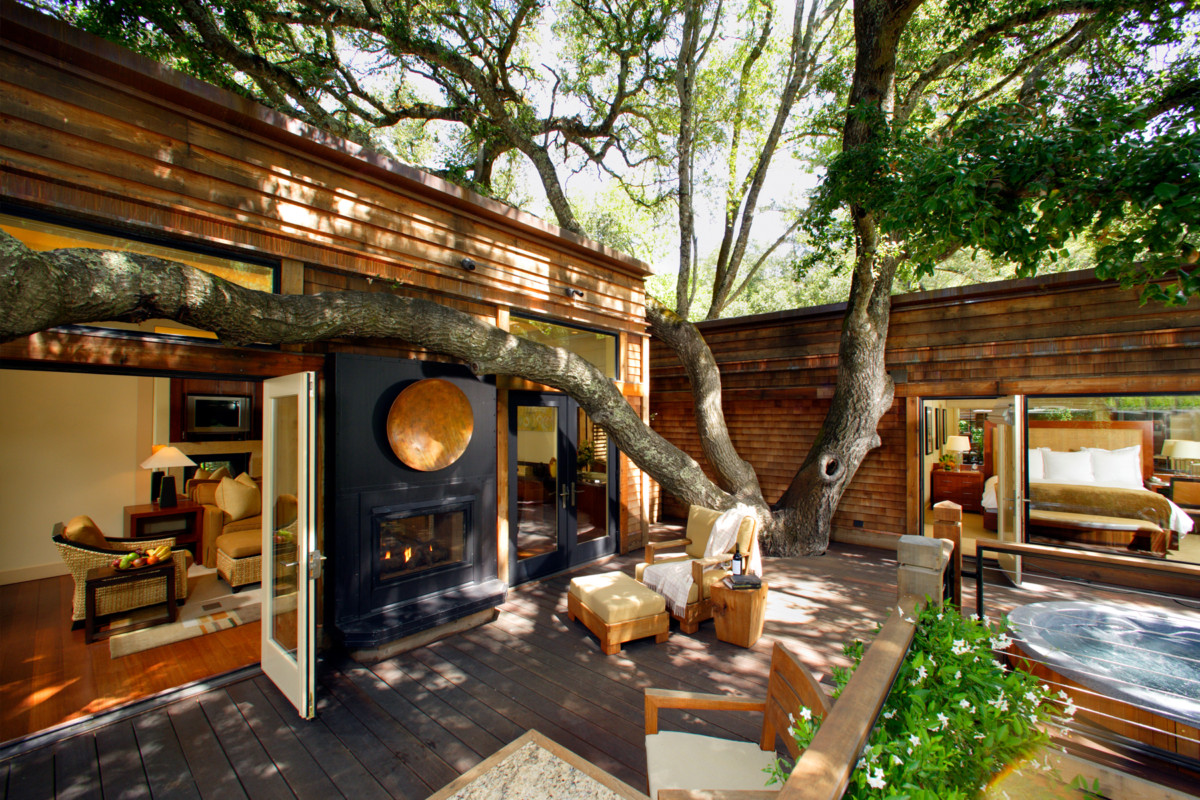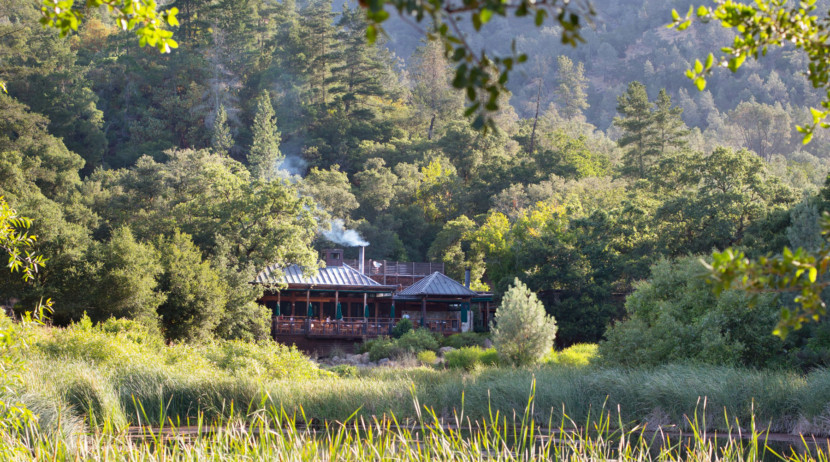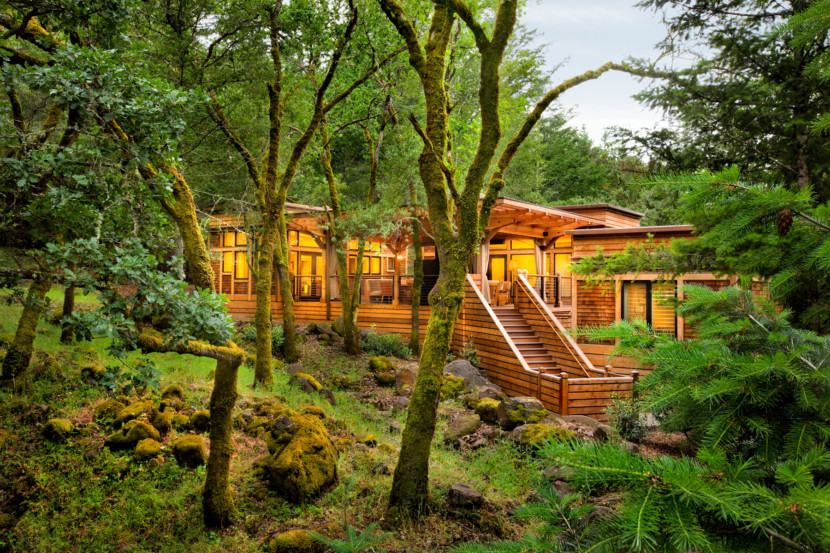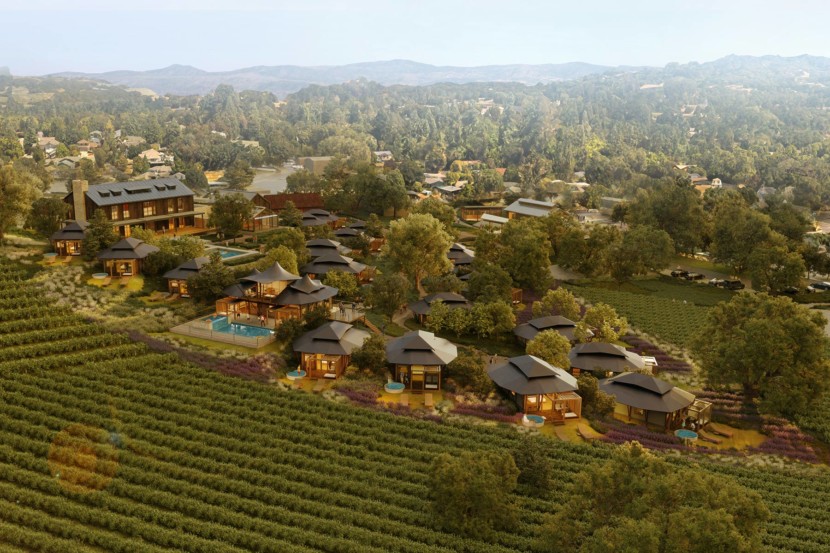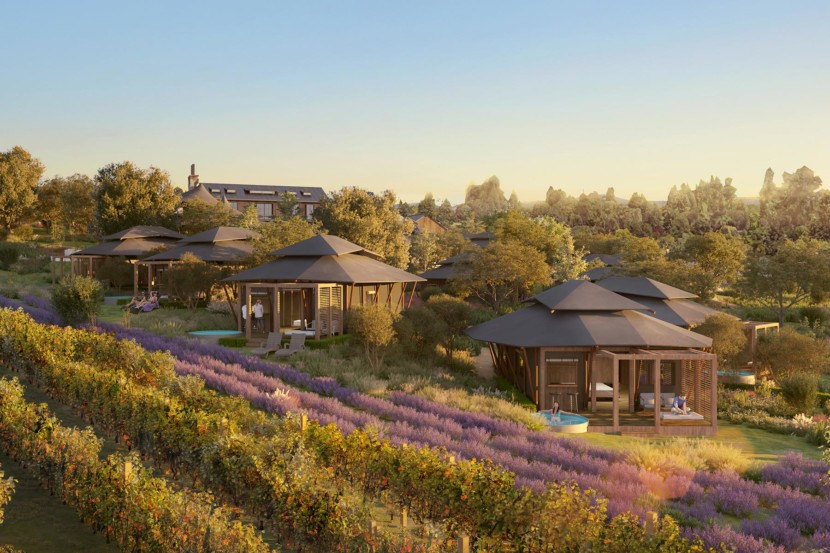A “Light-on-Land” Design Approach: Past and Present
Over a decade ago, we embarked on the design of Calistoga Ranch, a resort tucked away in a secluded canyon on a 157-acre site marked by ancient oaks, majestic hills, a rock-hewn stream, and a private lake. In creating this private luxury resort on one of the last available parcels in Napa Valley, our primary goal was to deliver a “bungalow in the woods” experience that immerses travelers in the beauty and tranquility of the natural environment. As our firm continues to grow its practice, including the launch of a new studio called SB Outside that focuses on alternative, sustainability-driven hospitality units, we return to Calistoga Ranch as a seminal project, for despite being destroyed in the Glass Fire of 2020, it encompasses an early iteration of a “light-on-land” ethos.
The Calistoga Ranch site had long been zoned for camp-ground use, with a strict limit on stick-built construction, meaning limits on constructing buildings on-site. Today, prefabrication and modular construction are growing in demand as building processes with several environmentally friendly benefits. With its restrictions around stick-built construction, the Calistoga Ranch site demanded that we leverage such processes to bring the resort to life. Rather than attempt to change the existing zoning, the development and design team worked within the existing guidelines and created each guest and owner lodge as a series of prefabricated modular units, set upon pier foundations and connected by wooden decks, trellised walkways, and large outdoor deck/living areas. The resort structures were clustered on 23 central acres (with the remaining acres undeveloped except for hiking trails) and placed so as not to disrupt the environment or necessitate the removal of trees.
By setting the resort structures on pilings rather than on traditional slab or perimeter foundations, the guest and owner lodges hovered above the landscape, allowing unrestrained root growth and natural drainage patterns within the sensitive valley setting. The unique series of structures for each lodge also allowed each unit to be more easily customized around existing topography, giving guests distinctive interactions with their immediate natural surroundings.

We proposed a similar elevated structure design that allows nature to remain as uninterrupted as possible for another hotel project in Utah.
“In developing the glamping tents and guestroom cabins at the Utah desert project, our team envisioned elevated cabin structures mounted on concrete piers and placed so that the slope of the earth can maintain its natural course,” said SB Outside Director, Josh Abbey. “The cabins are elevated in such a way so as not to disturb water runoff and have a minimal impact on the landscape.”
The above examples describe one aspect of a light-on-land approach to hotel design: honoring and safeguarding the patterns and intrinsic properties of the landscape. But in addition to being sensitive to the existing environment from a material and structural point of view, a light-on-land mindset considers building performance and asks how a hotel might be more self-sustainable in terms of mechanical, electrical, and plumbing (MEP) systems. Integrating rainwater collection and reuse for graywater systems, orienting buildings to harness and maximize natural light, leveraging natural ventilation systems and Passive House design methods are all key considerations when adopting a light-on-land approach to hotel design.
The cabins at the Utah Desert project, for example, were further developed to be of modular construction and self-sufficient, with off-grid capabilities such as solar panels, passive cooling, rainwater collection and filtration, and a local septic system.
At a project in Forestville, luxurious glamping structures are nestled in a site adjacent to the vineyards of Silver Oak Winery in the Alexander Valley of Sonoma County. We proposed a series of tents that are less energy-intensive and overlook the vineyards with views to the nearby mountain range. The arrival cottage acts as the central element of the overall development, with its upper floors housing guestrooms for guests who might prefer more traditional lodging over a glamping experience out near the vineyards.
Authored by Matt Page, Vice President, and Associate Principal, SB Architects.
Originally created for and published on Hotel Executive as ‘Light-on-Land Approaches to Hotel Design.’




